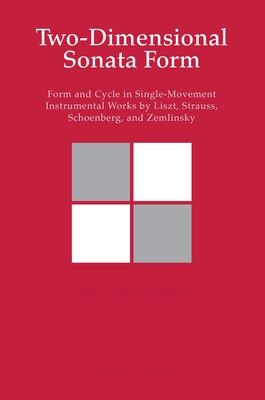
- We will send in 10–14 business days.
- Author: Steven Vande Moortele
- Publisher: Leuven University Press
- ISBN-10: 9462704384
- ISBN-13: 9789462704381
- Format: 15.6 x 23.4 x 1.2 cm, minkšti viršeliai
- Language: English
- SAVE -10% with code: EXTRA
Reviews
Description
Two-Dimensional Sonata Form is the first book dedicated to the combination of the movements of a multimovement sonata cycle with an overarching single-movement form that is itself organized as a sonata form. Drawing on a variety of historical and recent approaches to musical form (e.g., Marxian and Schoenbergian Formenlehre, Caplin's theory of formal functions, and Hepokoski and Darcy's Sonata Theory), it begins by developing an original theoretical framework for the analysis of this type of form that is so characteristic of the later nineteenth and early twentieth century. It then offers an in-depth examination of nine exemplary works by four Central European composers: the Piano Sonata in B minor and the symphonic poems Tasso and Die Ideale by Franz Liszt; Richard Strauss's tone poems Don Juan and Ein Heldenleben; the symphonic poem Pelleas und Melisande, the First String Quartet and the First Chamber Symphony by Arnold Schoenberg, and Alexander Zemlinsky's Second String Quartet.
EXTRA 10 % discount with code: EXTRA
The promotion ends in 22d.13:03:46
The discount code is valid when purchasing from 10 €. Discounts do not stack.
- Author: Steven Vande Moortele
- Publisher: Leuven University Press
- ISBN-10: 9462704384
- ISBN-13: 9789462704381
- Format: 15.6 x 23.4 x 1.2 cm, minkšti viršeliai
- Language: English English
Two-Dimensional Sonata Form is the first book dedicated to the combination of the movements of a multimovement sonata cycle with an overarching single-movement form that is itself organized as a sonata form. Drawing on a variety of historical and recent approaches to musical form (e.g., Marxian and Schoenbergian Formenlehre, Caplin's theory of formal functions, and Hepokoski and Darcy's Sonata Theory), it begins by developing an original theoretical framework for the analysis of this type of form that is so characteristic of the later nineteenth and early twentieth century. It then offers an in-depth examination of nine exemplary works by four Central European composers: the Piano Sonata in B minor and the symphonic poems Tasso and Die Ideale by Franz Liszt; Richard Strauss's tone poems Don Juan and Ein Heldenleben; the symphonic poem Pelleas und Melisande, the First String Quartet and the First Chamber Symphony by Arnold Schoenberg, and Alexander Zemlinsky's Second String Quartet.


Reviews